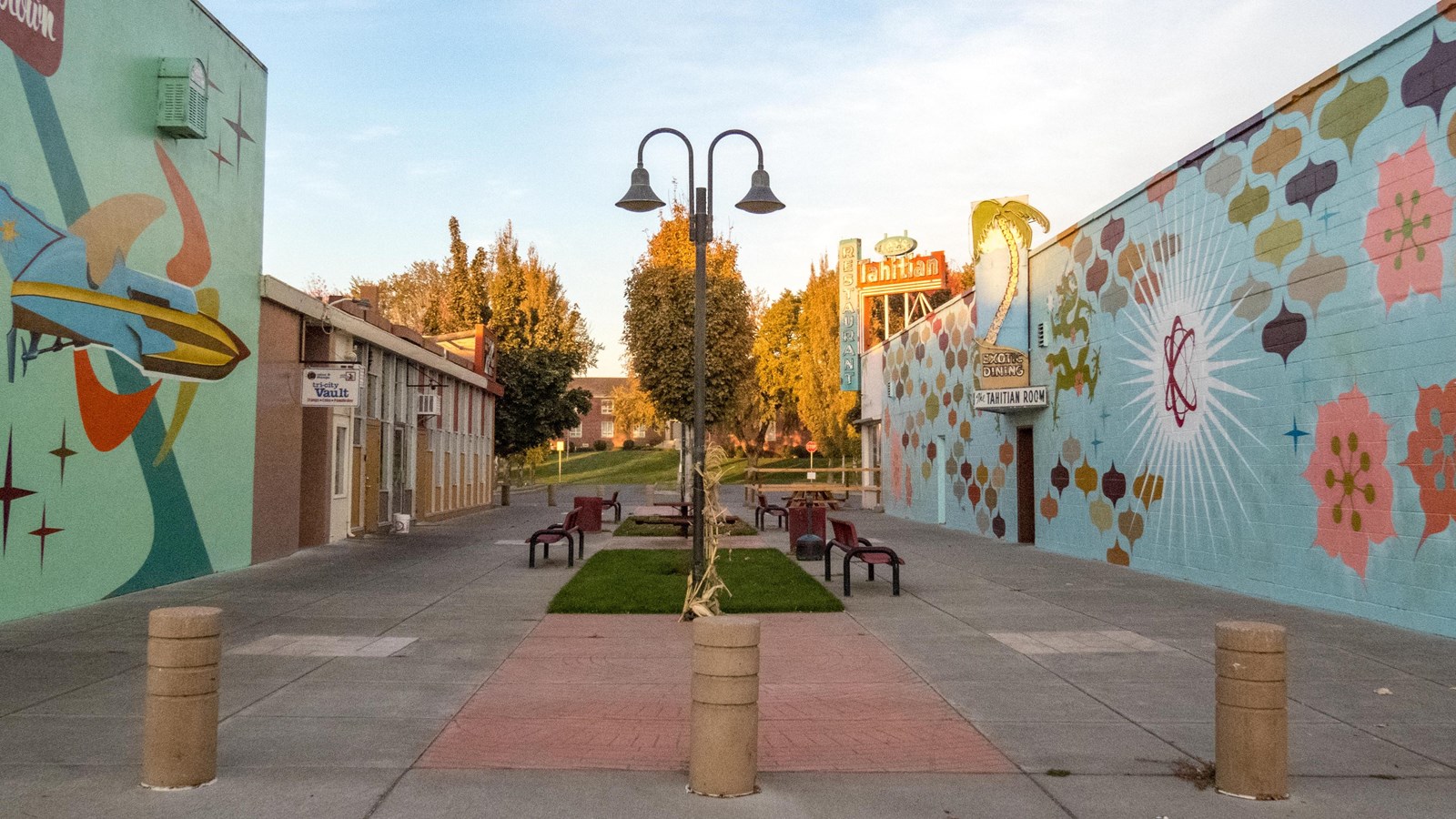Last updated: September 10, 2024
Place
Uptown Shopping Center

NPS/BURGHART
Benches/Seating, Bicycle - Rack, Food/Drink - Restaurant/Table Service, Gifts/Souvenirs/Books
The Uptown Shopping Center first welcomed customers in 1949 and was one of the first car-oriented shopping malls constructed in the United States. Although the Manhattan Project officially ended in 1947, the Hanford Site continued producing plutonium throughout the Cold War. The mall exemplifies the type of prosperity that the US Atomic Energy Commission promised to nuclear industry workers during the Cold War. Today, an atomic-age design enlivens the center’s walls.
Before the Manhattan Project, Richland was a small settlement consisting mainly of farmers and ranchers, with few choices for shopping and services. Selection of the Hanford Site for plutonium production changed Richland almost overnight from a small village to a secret city of scientists, engineers, and army officials. People did not expect the Hanford Site to operate beyond the end of World War II. Early city planning reflected this short-term vision and emphasized building new homes as quickly as possible.
Between 1940 and 1945, the population of Richland grew from 250 to about 15,000 residents. The government built approximately 2,500 standardized homes to house the thousands of new residents. Richland’s existing downtown was reconfigured into a modest shopping district for this new, walkable village.
Although additional retailers came to Richland during the Manhattan Project, the temporary nature of the project, coupled with limited planning for retail space, led to complaints. Many residents spent their money in Pasco or Walla Walla’s more extensive shopping districts. Then the Cold War changed everything, creating a long-term demand for plutonium to fuel the US nuclear weapons program—and for a wider selection of shopping options for the thousands of new workers who moved here to make this plutonium. Unlike wartime Richland, the Uptown Shopping Center contained a variety of local restaurants, national chain stores, and independent retailers.
Continue Your Journey
To better understand what came before the Uptown Shopping Center, you can visit a few sites remaining from the farming village of Richland and the Manhattan Project years. They include Gress’s Meat Market (Frost Me Sweet), the Dyer Building (Gallery at the Park), and Riverside Park (Howard Amon Park).
During World War II, The Greenway (Richland Parkway) was the hub of activity, where Richland residents went to shop, dine, check out a library book, or see a movie. Stop by Rodney Block Park to see the mass-manufactured alphabet homes, the rapidly constructed homes for Manhattan Project workers, to get a sense of wartime Richland’s domestic life. Compare these homes to the Gold Coast Alphabet Homes, built in the same period as the Uptown Shopping Center to compare how Richland's standard of living changed following World War II.
